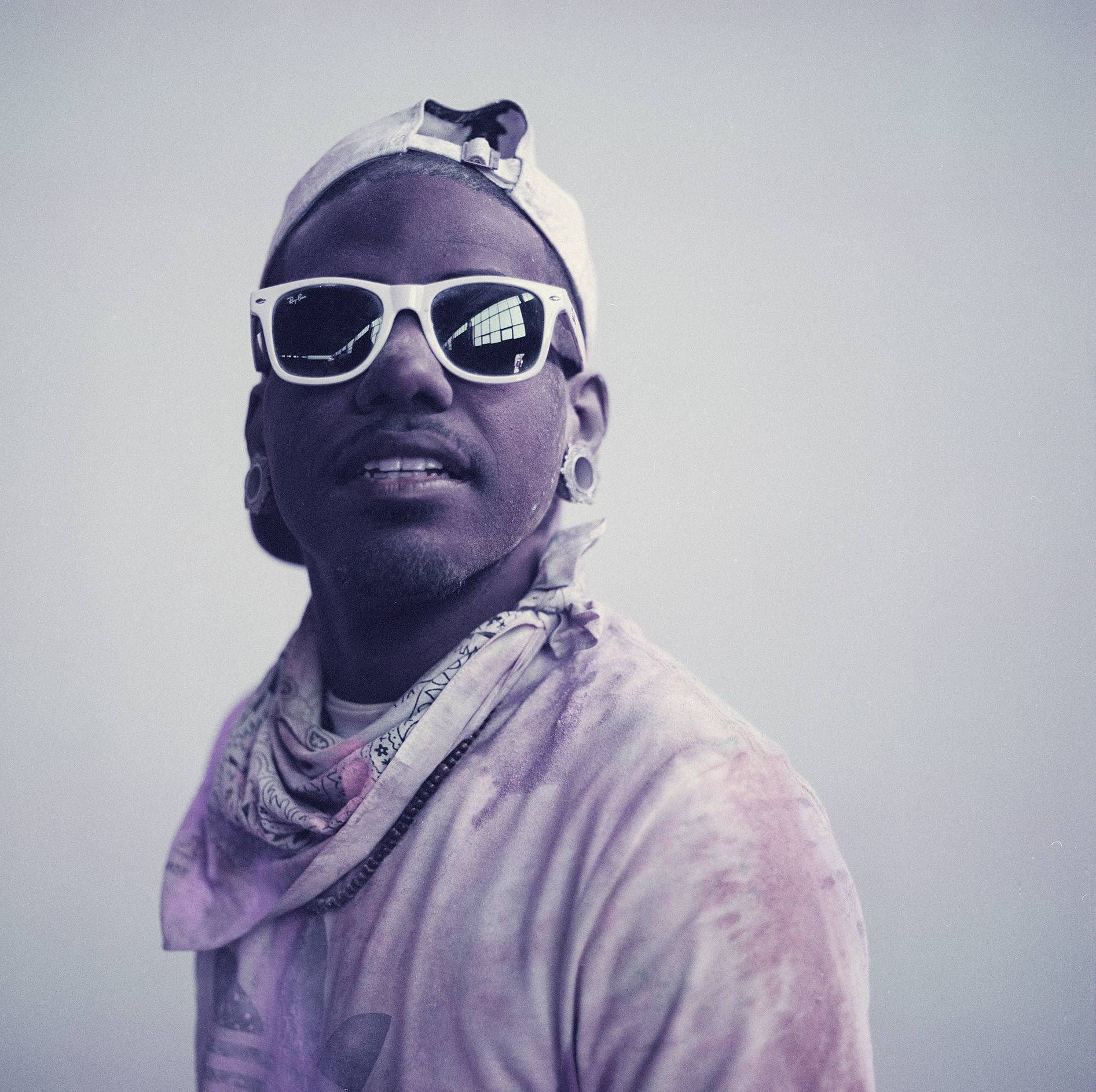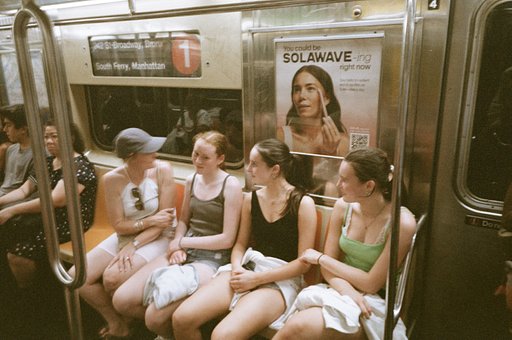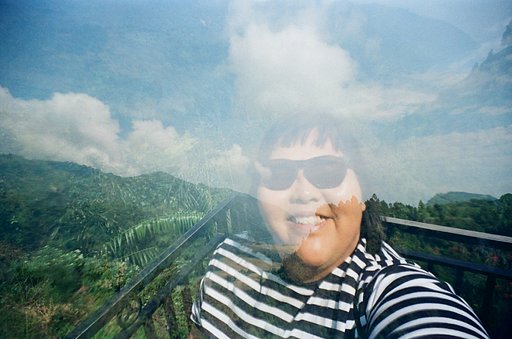C.S. Muncy: Red, White, and Purple
3 11 Share TweetC.S. Muncy's portraits are some that almost seem like they're out of a coloring book. Using LomoChrome Purple takes the photos into this pastel world of color while still keeping the humanity of the subjects he photographs intact. We got to talk to C.S. about his work, life and travels in the U.S. Air Force.

Hi CS, welcome to the magazine! Can you introduce yourself a bit to our readers?
So hey - I'm C.S. - I'm a freelance news shooter based in New York City and Washington D.C. I've been shooting for the last fifteen years or so, mostly for NYC-based papers, but I've done some national and international stuff as well. I'm also a photographer with the 106th Rescue Wing, an Air National Guard unit out in Long Island.
You work in the Air Force, of which thank you for serving, what has that experience been like?
I honestly love it. Being a photographer is one of the best jobs you can have in the Air Force. Being part of a Rescue Wing is an amazing opportunity - you get to see and experience things that a lot of other people will never get the chance to see. Like anything else though, it has its ups and downs. There have been tough times as well as good ones. On top of that, I make a strong effort to keep my Air Force life separate from my freelancing work.

You document a lot from your time in the Air Force in addition to using a lot of your friends from there as your subjects, what about that interests you?
I do get the chance to photograph my friends at work, but that's just a small part of our job. Every day I try to get out and visit different sections to see what's going on for the week. It's not just about making pretty pictures - historical documentation is a big part of our mission. Military photographers represent the institutional memory of each unit.
Your portraits have both this harshness of the color making them dirty, yet you photograph your subjects in such a soft light? Can you speak with us a little bit about the juxtaposition? Why photograph them in this way?
Holi can be incredibly difficult to shoot, at least from a technical point of view. You really have to seal your cameras against dirt and colored paint, which gets everywhere. For digital cameras, this can cause problems with spots on your sensor or getting in your prism. For analog cameras, it can cause issues by getting stuck in the lens assembly or shutter. Even small pieces of debris can kill your camera.

For lighting I used a mixture of natural light and studio lights. For most of the shots I used an XPlor 600 with a collapsible softbox and some seamless gray paper. However, since we were working out of a large garage-style studio, I was able to open sliding doors and control the amount of light hitting my subjects. This provided a very soft, appealing light source that was a nice contrast to the heaps of colored paint thrown on each subject. You'll notice some of the digital images are a lot more contrasty than the purple film, and a lot of this has to do with the different light sources. Both are appealing, but I tend to prefer the natural lighting when used with film.
You work with the Lomo Chrome Purple film, why do you choose to work with that and how was your experience been?
I shot Holi this year with both Lomo Chrome Purple (in 120 and 35mm format) as well as some expired Kodak Aerochrome. The results are superficially very similar, however the Aerochrome tended to be much more saturated. I think I liked the Purple stock a bit more because it was a lot more predictable and the colors were slightly more muted. At the same time, Purple film can be trying to work with. Getting reliable, repeatable results takes some effort - trying to get a traditional white/color balance can be extremely difficult.

What camera do you tend to work with both on the field documenting and doing studio work?
So I've actually got a collection of cameras I work with, each one specific to a look I'm trying to capture. My favorite is my Hasselblad XPan, a panoramic 35mm rangefinder they stopped making back in the early 2000's. For my Holi images, I shot with my Hasselblad 500C and my Nikon F100. I recently picked up an 1800's 6" f4 petzval lens which I've mounted on a Pacemaker Speed Graphic, which I intend on using for wet plate portraits. For my news work, I stick with my Nikon D4 and D750. Sooner or later I'll upgrade to a D850, but that's going to be a while from now. I tend to only upgrade when the camera has been beaten to death or it's no longer competitive, and both bodies are so good I don't see that happening for a while.

What challenges have you faced documenting the Air Force?
Very few. I have leadership that supports our office and an exciting mission to document.
What can we expect to see from you in the future?
As I mentioned above, I'm starting to get into wet plate photography, meaning tintypes and glass plate photography. I think it's incredibly important to be able to offer editors something unique and different. I've started taking classes at Penumbra Foundation in NYC, and I can't recommend them highly enough. I also write for The Photo Brigade, so you'll see my work there.
You can view more of C.S.'s work on his Website. The LomoChrome Purple film can be purchased on our Online Shop.
written by sarahlindsayk on 2018-08-06 #gear #people

















3 Comments